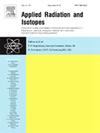Radiochemical neutron activation analysis of elemental contents in crude phosphoric acid samples and studies on adsorption removal of these elements using synthesized bionanocomposites
IF 1.6
3区 工程技术
Q3 CHEMISTRY, INORGANIC & NUCLEAR
引用次数: 0
Abstract
Harmful elements in Egyptian phosphoric acid were identified by radiochemical neutron activation analysis. In the Second Egyptian Nuclear Research Reactor, precipitates were created and examined to identify many types of contaminants (Ce, Co, Cr, etc.). New bionanocomposite materials effectively removed with a high proportion each of Ce, Th, Pa, U, Np, Zn, and Co (100%) and a somewhat lower percentage (65–85%) for Cr, Sc, and Fe from simulated solutions, suggesting promise for purifying phosphoric acid.
粗磷酸样品中元素含量的放射化学中子活化分析以及利用合成的仿生复合材料吸附去除这些元素的研究
通过放射化学中子活化分析,确定了埃及磷酸中的有害元素。在埃及第二核研究反应堆中,制造并检查了沉淀物,以确定多种污染物(铈、钴、铬等)。新的仿生复合材料能从模拟溶液中有效去除高比例的 Ce、Th、Pa、U、Np、Zn 和 Co(100%),以及较低比例(65-85%)的 Cr、Sc 和 Fe,这表明了净化磷酸的前景。
本文章由计算机程序翻译,如有差异,请以英文原文为准。
求助全文
约1分钟内获得全文
求助全文
来源期刊

Applied Radiation and Isotopes
工程技术-核科学技术
CiteScore
3.00
自引率
12.50%
发文量
406
审稿时长
13.5 months
期刊介绍:
Applied Radiation and Isotopes provides a high quality medium for the publication of substantial, original and scientific and technological papers on the development and peaceful application of nuclear, radiation and radionuclide techniques in chemistry, physics, biochemistry, biology, medicine, security, engineering and in the earth, planetary and environmental sciences, all including dosimetry. Nuclear techniques are defined in the broadest sense and both experimental and theoretical papers are welcome. They include the development and use of α- and β-particles, X-rays and γ-rays, neutrons and other nuclear particles and radiations from all sources, including radionuclides, synchrotron sources, cyclotrons and reactors and from the natural environment.
The journal aims to publish papers with significance to an international audience, containing substantial novelty and scientific impact. The Editors reserve the rights to reject, with or without external review, papers that do not meet these criteria.
Papers dealing with radiation processing, i.e., where radiation is used to bring about a biological, chemical or physical change in a material, should be directed to our sister journal Radiation Physics and Chemistry.
 求助内容:
求助内容: 应助结果提醒方式:
应助结果提醒方式:


